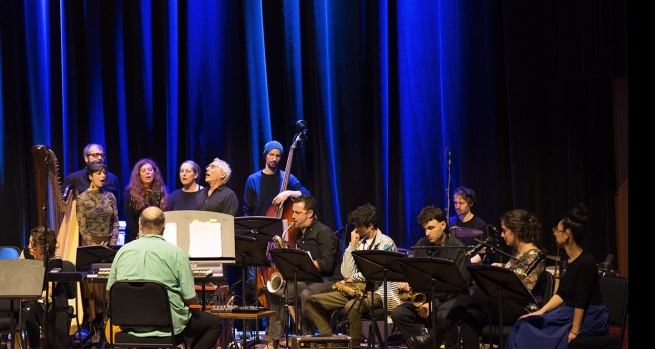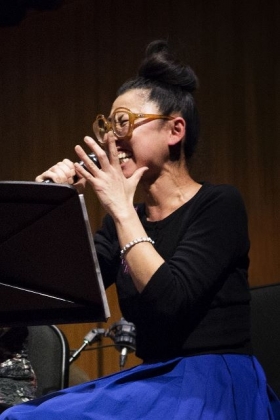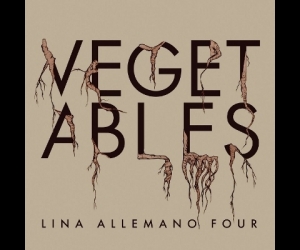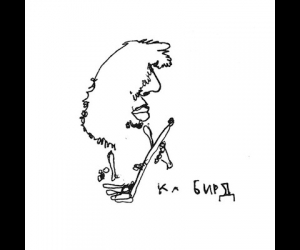
Sam Shalabi’s musical worlds are a collision of the Montreal Mile End art–noise–rock–improv scene and the bona fide craziness of Cairo—a city where societal and political instability weaves a shifting sand of death and beauty. It’s easy to see how the effect of these two influences have thoroughly permeated Shalabi’s take on the world, with the unnerving yet ecstatic effect of dancing on air.
The palette that informs his large-ensemble compositions for Land Of Kush is rooted in the large-ensemble works of Egyptian composers who, after hearing and being awed by Western composers in the 1930s, sought to incorporate the numbers and instruments to create sprawling works that were spearheaded by such monumental singers as Umm Kalthum and Abd al-Wahhab.
This is not to say that they emulated the form or content of Western classical music, but rather that they augmented the traditional Egyptian forms and small-ensemble instrumentation of Tahkt and—later on— Fiquah to create an unmistakably Egyptian sound.


Shalabi takes this mashup roaring into the twenty-first century by including rock, noise, free jazz, and even Celtic influences—all laced with lyrics redolent of Bukowski and Joyce.
The world premiere performance in Toronto of his new work Sand Enigma, written for the twenty-three-member edition of Land of Kush, was a stellar example of the possibilities of such a form, a form whose execution transported the listener into a jagged filmscape of equal parts raw power and vulnerability.
Crescendos of intensity—whether groove based or free form—crashed and roared to almost unbearable heights, yet never lost focus or intent as the players were cued into duos or trios of sometimes stunning clarity and beauty.
It’s really impossible to select individual performances, as all who were featured were equally strong, but props must be given to the blistering interventions of Liz Lima (vocals, clarinet) and Alexandre St. Onge (vocals, laptop), Sarah Page (harp), Adam Kinnear (tenor sax), and Dave Gossage (flute).

The vocalists were uniformly brilliant in solo and ensemble passages, bringing a beautiful counterpoint to the instrumental narrative: Elizabeth Anka Viagic, Nadah El Shazly, Katie Moore, and [right photo] Maya Kuroki sang, screamed, and shouted themselves through the lens of Shalabi with a conviction, musicality, and originality that was immensely satisfying.
Shalabi himself did not play the oud—the instrument he plays that most refers to Egypt in this sound world. Instead, he layered drone and electric-guitar-inflected keyboards into the mix when he was not conducting the ensemble through his composition.
The direct reference to Egypt came from the wonderful work of Amir Amiri (santur) and Anthony Seck (setar).
This amazing night of music formed itself into a single, seamless entity. The number and form of events within was dizzying, but the focus was never lost, and the clear narrative had its own internal logic.
More than that, though, the visual weight of the ensemble in the simple yet awe-inspiring concert hall of the Aga Khan Museum created an event that may well prove to be one of the most memorable performances of 2018.
Photos by Claire Harvie, courtesy of The Music Gallery.


